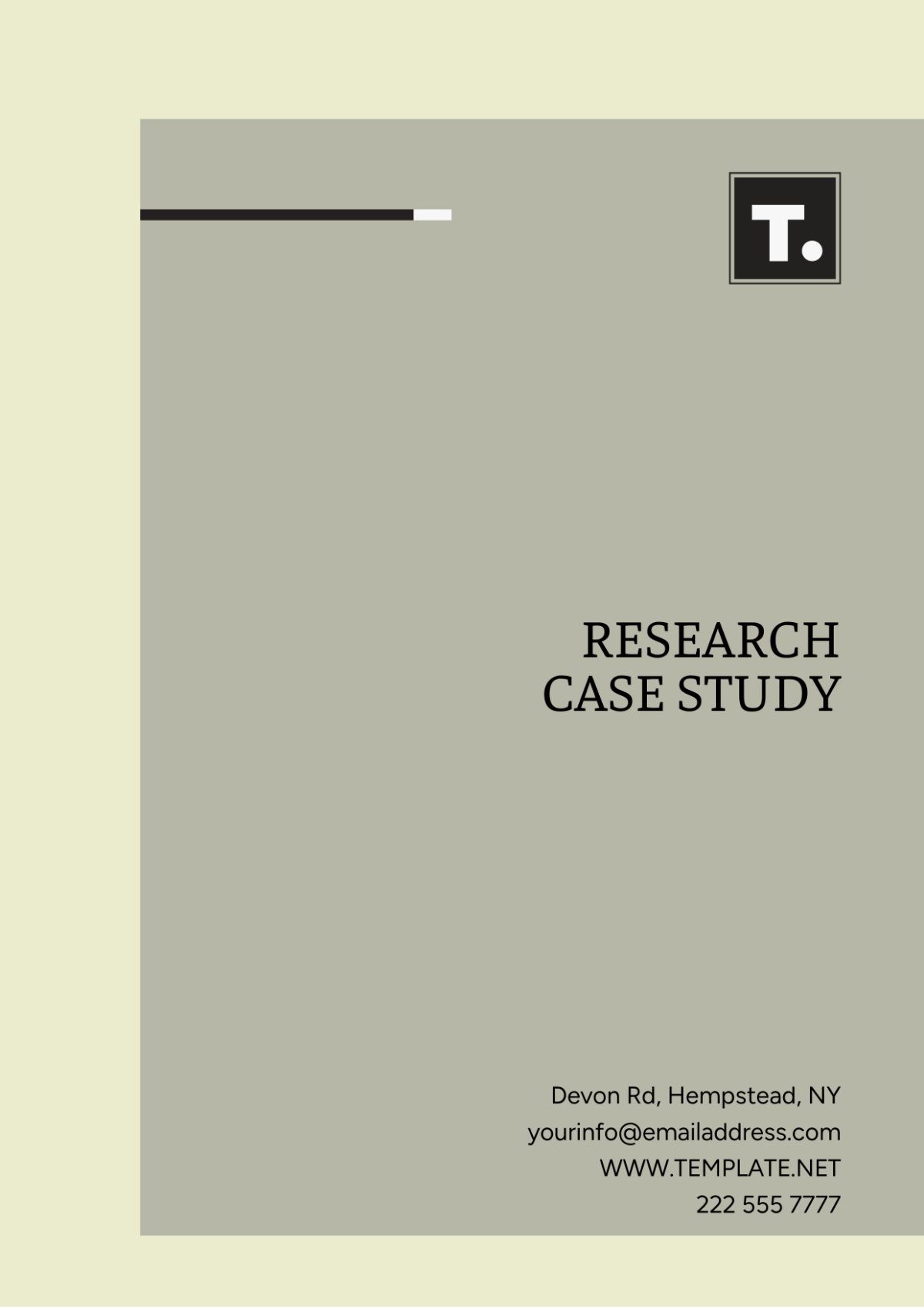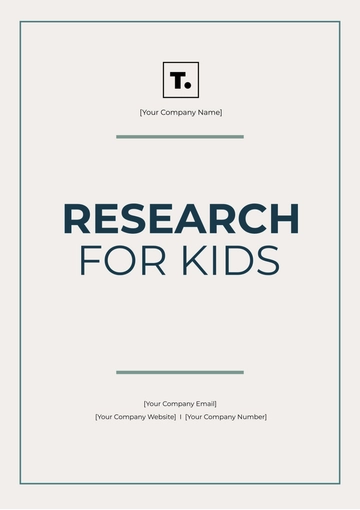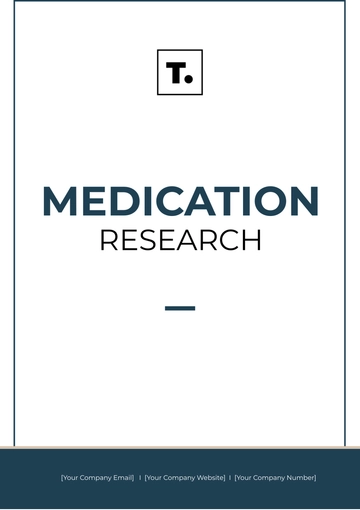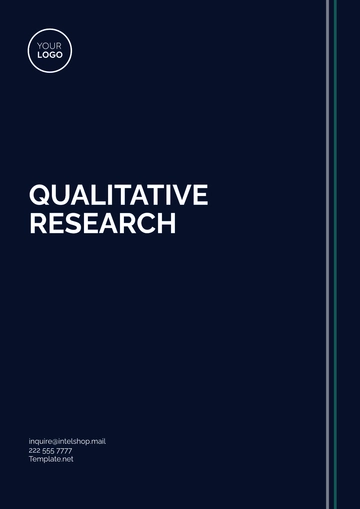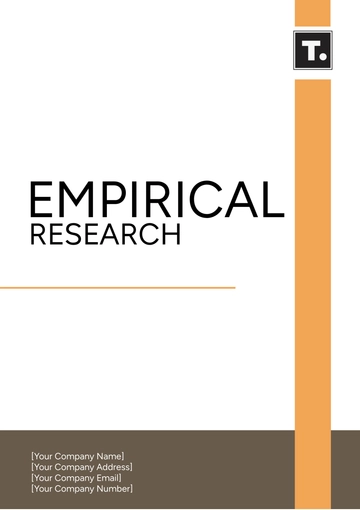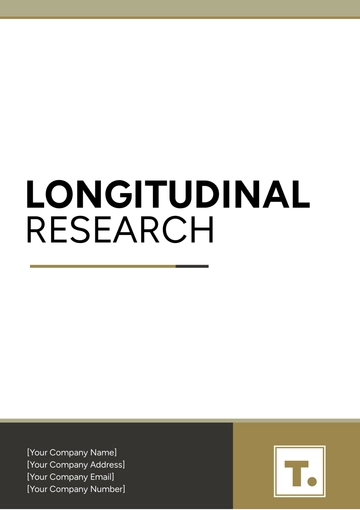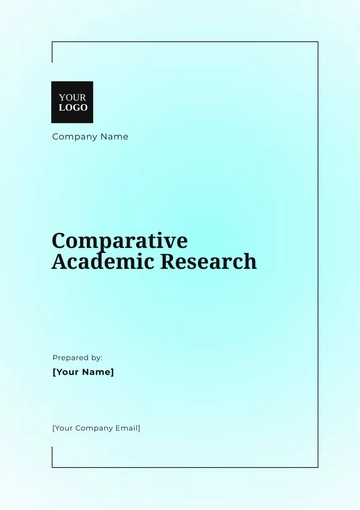RESEARCH CASE STUDY
Prepared by: [Your Name]
I. Introduction
The purpose of this case study, conducted by [Your Name] from the Research Department, is to delve deeply into the research topic of "The Impact of Peer Tutoring on Student Academic Performance." This introductory section outlines the background information necessary to understand the broader field of study and the specific research question addressed. It sets the stage for a comprehensive examination, highlighting the relevance and the timely significance of the study in contemporary research.
This document aims to explore the methods used, analyze the findings, and discuss the implications of these outcomes on both theoretical and practical levels. This study's findings aim to contribute valuable insights to the field of educational psychology and offer recommendations for future research.
II. Problem Statement
The core issue addressed in this case study is the persistent achievement gap observed among students, particularly in underprivileged communities, despite various interventions. This section articulates the challenges or gaps in knowledge that the study aims to resolve or bridge. It explores the implications of the problem within the wider context of educational psychology, providing a clear justification for the research undertaken.
By thoroughly understanding the problem, the researchers aim to structure a research strategy that addresses these specific issues effectively, ensuring that the findings are robust and applicable.
III. Literature Review
A comprehensive review of the existing literature relating to peer tutoring and its impact on student academic performance was conducted. This review synthesizes critical studies, theories, and empirical research that form the foundation of this case study. Key themes identified include:
The effectiveness of peer tutoring in improving academic outcomes.
The socio-cultural factors influencing peer tutoring efficacy.
The role of peer relationships in educational settings and their impact on learning outcomes.
This literature review not only contextualizes the study within the broader academic field but also identifies the areas where this research could contribute new knowledge or perspectives.
IV. Methodology
The methodology employed for this case study involves a mixed-methods approach, combining quantitative analysis of academic performance data with qualitative interviews with students and teachers. Specifically tailored to address the objectives of the research topic "The Impact of Peer Tutoring on Student Academic Performance," this section details the approach taken and justifies the selection of tools and techniques, which include:
Pre- and post-test academic assessments to measure improvement.
Surveys to gather perceptions of peer tutoring effectiveness.
In-depth interviews with students and teachers to explore the socio-emotional aspects of peer tutoring.
Additionally, the sample size, data collection methods, and data analysis procedures are outlined, ensuring the replicability of the study and clarity for peer review.
V. Solution
The solutions derived from the research findings are discussed in this segment. the researchers approached the problem by implementing a structured peer tutoring program in a local middle school, involving both academic and socio-emotional support. This strategic approach produced a set of solutions that address the core issue from multiple angles, which are:
Solution Aspect 1: The implementation of a peer tutoring program led to significant improvements in academic performance, particularly among students from disadvantaged backgrounds.
Solution Aspect 2: The peer tutoring model demonstrated scalability and adaptability, showing promise for implementation in other educational contexts.
VI. Results
The results section presents a detailed analysis of the data collected. Key findings include:
Peer tutoring led to a statistically significant improvement in students' academic performance across various subjects.
Students reported increased confidence and motivation as a result of participating in the peer tutoring program.
Teachers noted positive changes in classroom dynamics and peer relationships following the implementation of the program.
Graphs, charts, and tables are included as necessary to illustrate crucial points and trends within the collected data. This visual representation aids in a clearer understanding and interpretation of the empirical evidence.
VII. Discussion
This section interlinks the results with the literature reviewed, discussing how the findings from this case study align with or diverge from, pre-existing knowledge. the researchers explore the implications of these results for the field, providing a critical analysis that highlights novel insights and the study's contributions to academic and practical knowledge.
The theoretical and practical relevance of the outcomes, along with potential future research pathways, are mapped out to suggest continuity in this line of inquiry.
VIII. Conclusion
The concluding remarks encapsulate the scope of the research and the crucial insights gained through this study about the impact of peer tutoring on student academic performance. Here, they summarize the impact of the findings and the larger implications for the field of educational psychology.
Recommendations for future studies, based on the limitations and discoveries made, are also proposed to encourage further exploration and validation of the results obtained.
IX. Limitations
Identifying the limitations of the study, this section provides transparency regarding the potential biases, methodological constraints, or external factors that might have influenced the data and the overall findings. This critical reflection ensures the study's integrity and supports the veracity of the conclusions drawn.
Such an honest appraisal helps in setting the stage for future research, indicating areas for improvement and more in-depth analysis.
X. Recommendations
Based on the findings and subsequent analysis, this section provides targeted recommendations that are practical, feasible, and beneficial for stakeholders or future researchers. These include:
Integration of peer tutoring programs into school curricula, with particular emphasis on schools serving disadvantaged communities.
Continued research into the long-term effects of peer tutoring on students' academic and socio-emotional development.
Case Study Templates @ Template.net
